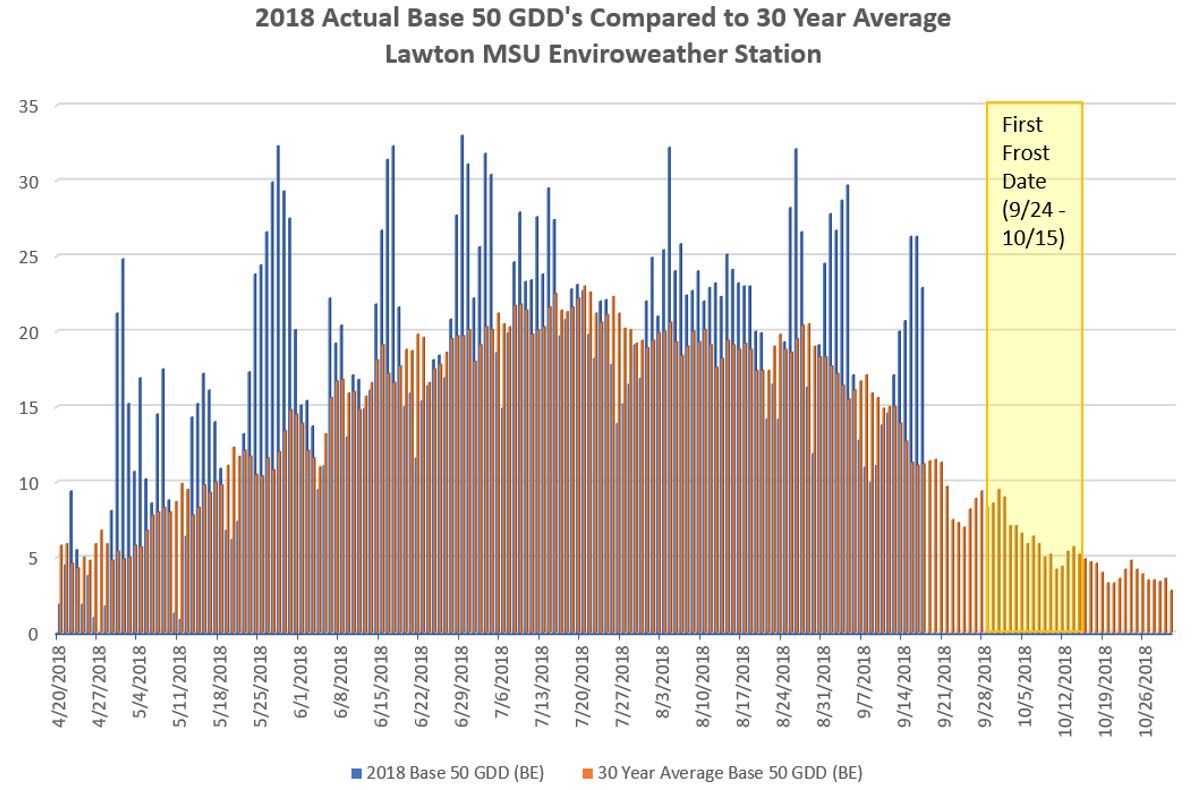Late-season warmth helps with corn maturity
September’s warm temperatures helped late planted corn in southwest Michigan to mature.

The 2018 spring planting season was marked by lengthy delays due to persistent periods of wet weather. While the moisture received in the spring was very beneficial as the weather turned dry across most of Michigan in July, planting delays caused headaches for producers that spent most of the season playing catch up with crops in very different stages of growth.
As the calendar switched from May to June, many planned corn fields were still left un-planted. Soon thereafter, the switch was on from planting corn to soybeans. While most of the area’s fields were planted by June 15, there was still surprising numbers of acres that had not been planted until conditions dried out in the third week of June.
While it is unclear when the first killing frost will occur in southwest Michigan this year, it is a sure bet that the much warmer than normal temperatures we have seen in September, along with a return to favorable rainfall, have helped the crops greatly. The chart below shows when 100-day RM corn should have or potentially will reach physiological maturity for various planting dates in the Lawton, Michigan, area of Van Buren County.

Projected date RM 100 (2350 GDU) hyrbids will reach R6 (black layer) for different planting dates. Source: MSU Lawton Enviroweather Station.
The chart above reflects the Baskerville-Emin 86-50 cutoff method for calculating growing degree-days (GDDs). The BE GDD system does not count temperatures above 86 degrees Fahrenheit as providing additional corn growth potential. This suggests that 100 RM corn planted by May 31 should be at or close to black layer by Sept. 18, 2018. Corn planted in June may still have a ways to go to reach physiological maturity. The current 6-10 and 8-14 day outlooks are calling for a return to more normal to cooler than normal weather for the period.
Corn at physiological maturity can be anywhere from 28-35 percent moisture, depending on a combination of factors, including hybrid characteristics such as husk leaf number and tightness, relative humidity, temperature and wind. Drying of corn grain occurs much faster during extended periods of hot and dry conditions. It takes approximately 30 GDDs to remove 1 percent of moisture in corn grain. Early planted corn had the opportunity to be exposed to 10 days of 25 GDD or warmer temperatures since reaching physiological maturity. Robert Nielsen, Purdue University corn agronomist, has written an excellent resource, “Field Drydown of Mature Corn Grain,” which discusses this process more fully.
2018 actual Base 50 GDDs compared to 30-year average. Source: MSU Lawton Enviroweather Station.
With the planting delays experienced in the spring of 2018, we expected challenges with immature crops going into fall in southwest Michigan. Mother Nature did its part to help us catch up. However, we still could use a later killing frost and some good warm, drying weather going into October and November to help reduce drying cost on later planted corn.



 Print
Print Email
Email